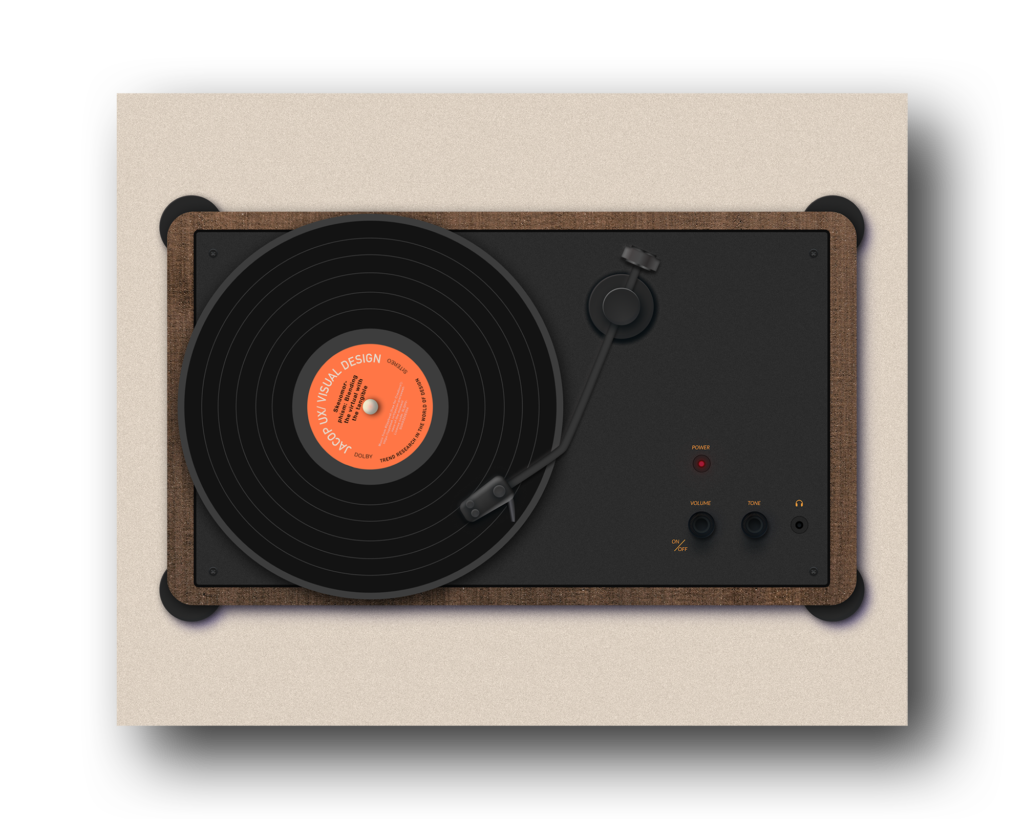Skeuomorphism: Recordplayer
TYPE:
ANIMATION
TOOLS:
FIGMA + AFTER EFFECTS + PREMIERE PRO + ILLUSTRATOR

In my quest for design trends, I came across skeuomorphism. This term is mainly used in graphic user interface design to describe interface objects that resemble their real-world counterparts. The idea is to give the user a sense of familiarity, such as buttons on your phone screen or website that appear as if they can be physically pressed. Skeuomorphism was very popular around 2010.
I’ve been using it in my photography art for years, although I didn’t know it was called that.
I wanted to see if I could put my creativity to work using only Figma while still maintaining simplicity, which can be quite a challenge. This is the result.
My intention was actually to create the entire animation and not only the design in Figma. However, the ability to animate multiple elements separately within the same frame proved to be very limited. Therefore, I used After Effects for the animations, after exporting the deck and moving elements as separate PNGs. A fun detail was mimicking the 33rpm of an LP, then syncing audio and visuals in Premiere Pro. Also I used Illustrator for the circular text on the label of the record because it was more convenient than using plugins in Figma. I didn’t feel color grading and other atmospheric adjustments were necessary for this exercise.
By the way, the record player is based on one of my earliest memories from my childhood in a working-class house I once inhabited on a Sunday, warmed by an old-fashioned gas stove, somewhere in the east side of Amsterdam. With my parents shuffling around that tiny living room to songs like “Cover me” by Percy Sledge. Through the radio, but often through that record player as well. Those were the days.